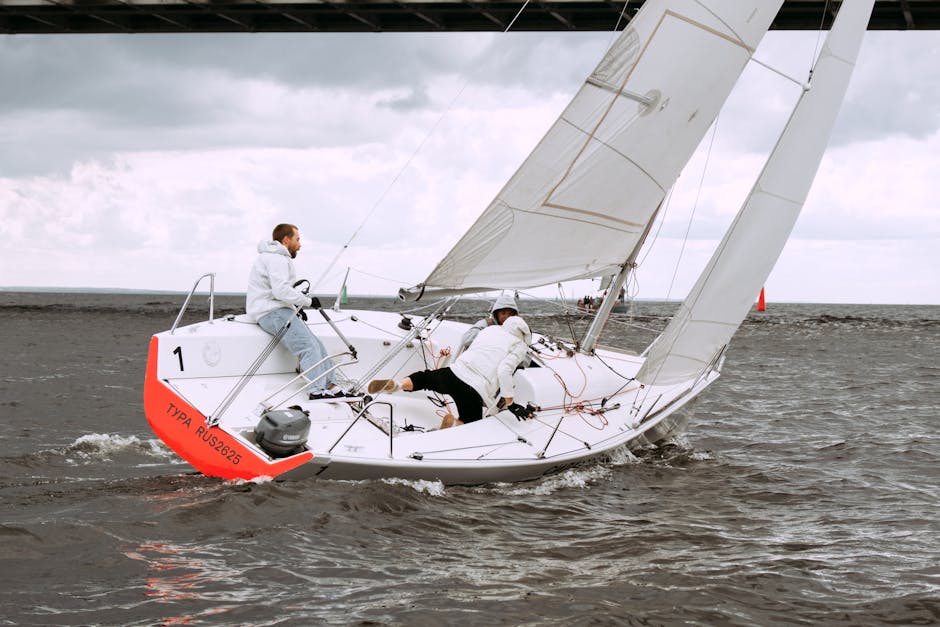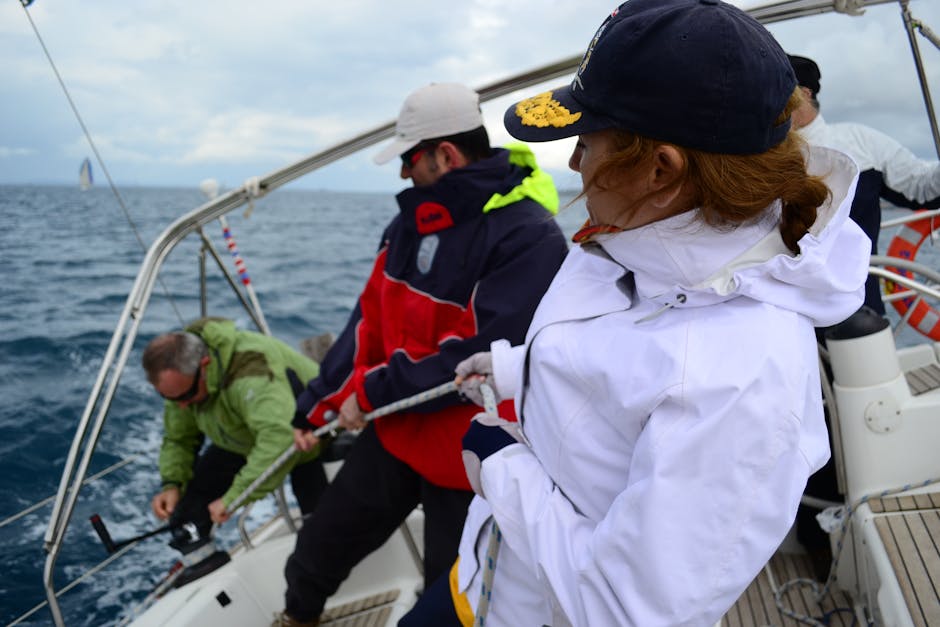Managing Crew Dynamics in Sailing Games
As the wind fills the sails and the boat glides effortlessly across the water, the crew on board a sailing vessel must work together seamlessly to navigate the challenges of the open sea. In the world of sailing games, managing crew dynamics is not just a matter of steering the ship it’s about communication, teamwork, and leadership. From coordinating maneuvers to overcoming obstacles, the dynamics among the crew members can make or break a sailing team’s success.
In this article, we will delve into the intricacies of managing crew dynamics in sailing games. We will explore the key aspects that contribute to a well-functioning crew, the challenges that may arise, and the strategies to overcome them. Whether you are a seasoned sailor looking to sharpen your skills or a beginner eager to learn the ropes, this guide will provide valuable insights into the world of crew dynamics in sailing games.
The Importance of Teamwork

Teamwork lies at the heart of successful sailing games. On a boat, every crew member plays a crucial role in ensuring smooth sailing and reaching the intended destination. From hoisting the sails to trimming the sheets, each task requires coordination and cooperation among the team members. A well-oiled crew operates like a finely tuned machine, with each individual contributing their skills and expertise to the collective effort.
In sailing games, teamwork extends beyond the physical tasks of sailing. It involves effective communication, trust, and mutual respect among the crew members. Clear communication is essential for conveying instructions, sharing information, and coordinating maneuvers. Trust in one another’s abilities fosters a sense of unity and camaraderie, creating a supportive environment where each member feels valued and respected.
Leadership and Roles

Effective leadership is key to managing crew dynamics in sailing games. A good leader sets the tone for the team, providing direction, motivation, and support. In the context of sailing, the captain assumes the role of the leader, overseeing the crew and making decisions that impact the course of the journey.
However, leadership in sailing games is not limited to the captain alone. Each crew member plays a role in the team’s success, whether it’s steering the boat, handling the sails, or navigating the waters. By understanding their responsibilities and working together towards a common goal, the crew can operate efficiently and effectively, even in challenging conditions.
Assigning roles based on individual strengths and expertise is crucial for optimizing the team’s performance. Some crew members may excel at steering the boat, while others may have a knack for reading the wind and currents. By leveraging each member’s skills and abilities, the crew can work in harmony, maximizing their chances of success.
Communication and Coordination

Effective communication is the cornerstone of managing crew dynamics in sailing games. Clear, concise, and timely communication is essential for conveying instructions, sharing information, and coordinating maneuvers. Whether it’s calling out commands, reporting changes in wind direction, or alerting the crew to potential hazards, communication plays a vital role in ensuring the safety and efficiency of the team.
In sailing games, communication is not just about words it also involves non-verbal cues, gestures, and signals. Hand signals, whistle commands, and visual cues are commonly used to convey information on board a sailing vessel, especially in noisy or challenging conditions. By establishing a common language and communication system, the crew can communicate effectively and respond swiftly to changing circumstances.
Decision-Making and Problem-Solving

Managing crew dynamics in sailing games also involves making quick decisions and solving problems on the fly. From changing weather conditions to unexpected obstacles, sailors must adapt to new situations and find solutions in real-time. Effective decision-making and problem-solving skills are essential for navigating the complexities of the open sea.
When faced with a challenging situation, the crew must work together to assess the options, weigh the risks, and decide on the best course of action. By fostering a culture of collaboration and critical thinking, the crew can approach problems with creativity and resourcefulness, turning obstacles into opportunities for growth and learning.
Moreover, debriefing and reflecting on past experiences can help the crew learn from their mistakes and improve their performance in future sailing games. By analyzing what went well and what could have been done differently, the team can identify areas for improvement and implement changes to enhance their effectiveness on the water.
Conflict Resolution and Team Building
Conflict is inevitable in any team setting, and sailing games are no exception. Differences in opinions, misunderstandings, and competing priorities can lead to tensions among crew members, affecting the overall cohesion and performance of the team. Effective conflict resolution and team building strategies are essential for addressing these issues and fostering a positive team environment.
Open communication, active listening, and empathy are key components of successful conflict resolution in sailing games. By encouraging dialogue, acknowledging different perspectives, and seeking common ground, the crew can resolve conflicts constructively and strengthen their relationships with one another. Building trust and rapport among team members is crucial for creating a supportive and cohesive team culture.
Team building activities, such as group exercises, games, and shared experiences, can also help strengthen the bond among crew members and improve teamwork in sailing games. By fostering a sense of camaraderie and collaboration, these activities can enhance communication, trust, and mutual respect within the team, leading to better performance on the water.
Adapting to Changing Conditions
Sailing games are dynamic and unpredictable, with weather conditions, currents, and obstacles presenting constant challenges to the crew. Flexibility, adaptability, and resilience are essential qualities for managing crew dynamics in the face of changing conditions. The ability to adjust to unforeseen circumstances and make quick decisions under pressure is crucial for overcoming obstacles and achieving the team’s goals.
By staying alert, observant, and responsive to the environment, the crew can anticipate changes, react promptly, and navigate safely through challenging conditions. Keeping a cool head, staying focused on the task at hand, and trusting in one another’s abilities are key strategies for managing crew dynamics in the ever-changing world of sailing games.
Expert Opinions
According to renowned sailing coach and author, John Rousmaniere, “Managing crew dynamics in sailing games requires a combination of skill, teamwork, and leadership. By fostering a culture of collaboration and communication, teams can navigate the challenges of the open sea with confidence and grace.” Rousmaniere’s insights shed light on the importance of effective crew management in sailing games, highlighting the key principles that underpin a successful sailing team.
Conclusion
In conclusion, managing crew dynamics in sailing games is a multifaceted endeavor that requires skill, teamwork, and leadership. By fostering effective communication, coordination, and teamwork, sailors can navigate the challenges of the open sea with confidence and grace. Building trust, resolving conflicts, and adapting to changing conditions are essential components of successful crew management in sailing games.
Whether you are a seasoned sailor or a novice enthusiast, mastering the art of managing crew dynamics will enhance your sailing experience and contribute to the success of your team. By working together, supporting one another, and embracing the spirit of adventure, you can sail the seas with skill and confidence, enjoying the thrill of the journey and the camaraderie of the crew.
As the wind fills the sails and the boat glides effortlessly across the water, the crew on board a sailing vessel must work together seamlessly to navigate the challenges of the open sea. In the world of sailing games, managing crew dynamics is not just a matter of steering the ship it’s about communication, teamwork, and leadership. From coordinating maneuvers to overcoming obstacles, the dynamics among the crew members can make or break a sailing team’s success.




